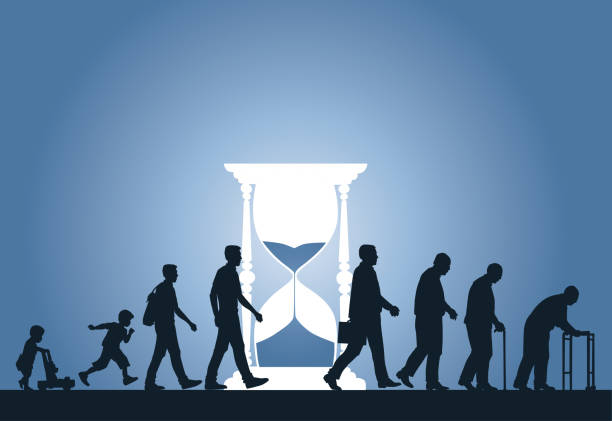Web 5.0: The Final Evolution of the Web
 segun stephen
segun stephen
Introduction
Humans seek optimal solutions to their needs by progressively building on existing knowledge. This has been evident in the evolution of the internet; Web 1 - 4 and finally Web 5.0. “Oh yeah, you should have doubts about the finality of the web.” However, join me on this journey, and together, we can dispel your doubts.
Data interoperability stands as the primary driving force behind the web's paradigm shift.
In this context, data interoperability implies a transition in how data is shared and exchanged across different platforms and systems on the internet.
This article will highlight this major shift and extensively talk about the Web 5.0
Keywords: Data interoperability, Centralised authority, Decentralised technology
Web 1.0
The read-only web
This is the read-only phase of the Web. Internet users could only read information publicly available.
Web 2.0
The read-write web
The demand for data interoperability arises. The data ranges from personal data, public data to sensitive/confidential data. The question was, how do we manage data across different apps we interact with?
Behold😊! Web 2.0 brought forth a solution: Centralised authorities such as Google help secure, manage and serve our data across applications we use.
Web 3.0-4.0
This web paradigm is a significant shift from web 2.0 with the following major features:
• Decentralised technology as opposed to Centralised technology in Web 2.0
• Intelligent interactions between internet users, the web, and machine.
Web 5.0
The evolution of the web is a progressive trend. This is why web 5.0 harnesses the strengths of past web models to address the limitation of the internet.
Among many are:
Web 5.0 seeks to harness the strength of seamless user data management of web 2.0 while addressing its limitation of centralised data management.
Web 5.0 harnesses the strength of decentralised technology of web 3.0 while addressing its limitation related to lack of user data privacy/confidentiality
The Trinity of Web 5.0
The three main pillars of web 5.0 revolves around empowering internet users with self-owned identity and restore control over their data. Hence, user privacy is guaranteed:
Decentralised Identifier
Imagine an internet where your identities such as your twitter handle is owned and controlled by you. identity verification, authentication to your day-to-day apps is independent of any centralized entity or service provider. This is Web 5.0! 😁
Verifiable Credential
It is black Friday deals, you intend to make some online purchases on Jumia using your mobile banking details. In this scenario, the key entities involved are you, your bank, and Jumia. As you add items to your cart and attempt to make a purchase, Jumia verifies with your bank through an intermediary authority (i.e a payment gateway such as PayPal) to ensure you have the required funds for the transaction.
With Web 5.0, your bank issues you a cryptographically signed verifiable credential which would be stored in your wallet. When making a purchase, Jumia does not need to know, trust you or go through any payment gateway but only verify the credential was issued by your bank. 😎
Decentralised Web Node
…building a more personal web with control over your datastore as opposed to web 2.0 paradigm.
FAQ
Does integration of Web 5.0 change the traditional app flow?
No, it does not. As a developer, shifting your data storage location is all it takes to deliver the advantages of a Web5 application to yourself and your users. You make a call to DWN instead of some centralized storage. However, user experience and dev framework remains the same with the addition of web5 SDK.
You simply take your data everywhere you go while retaining the full responsibility of who can write or read to/from your decentralized web node by defining the protocol. This achieved by resolving your DID and interacting with your web node for permission using Web5_Api
DWNs are not on blockchain.
No. Through your protocol definition, you configure the access you grant to a specific data seeker(s). However, everyone has access to read data you chose to make public.
For Developers 🧑💻
my first contribution to the repository
As a developer, embracing the Web 5 ecosystem is particularly intriguing for me as a developer due to its literal interpretation of Open Source. As a community member (Tech/non-tech), you have the ability to propose ideas, create plans, and directly impact changes. So, what are you waiting for? Your contribution is highly valued – act now! Contribution.md
Conclusion
In terms of data interoperability, the web paradigm has evolved through:
• The read-only phase (web 1.0)
• Centralised management (web 2.0)
• Decentralised technology and intelligent interactions (web 3.0 - 4.0)
• Returning data back to the internet users.
Your thoughts 💭
Considering data interoperability, do you envision a Web 6.0? Share your thoughts and constructive feedback in the comments; I'd love to hear them! 😎
Thank you!
Subscribe to my newsletter
Read articles from segun stephen directly inside your inbox. Subscribe to the newsletter, and don't miss out.
Written by









